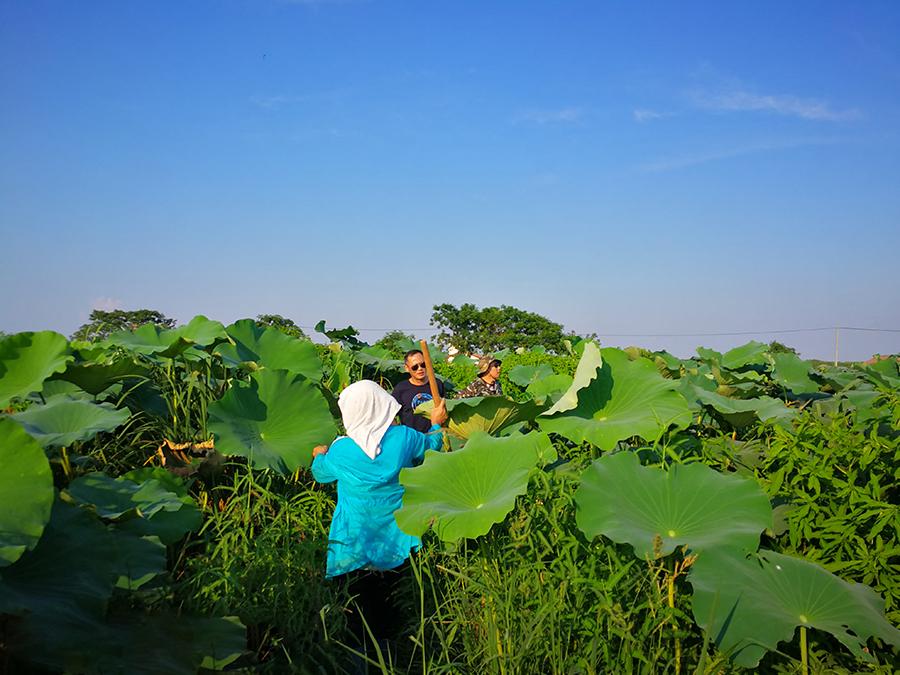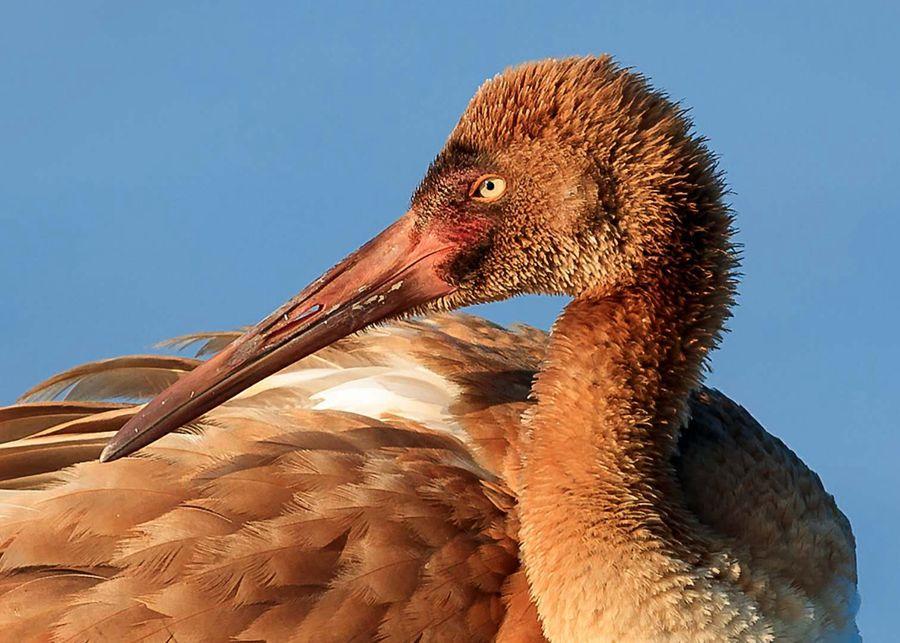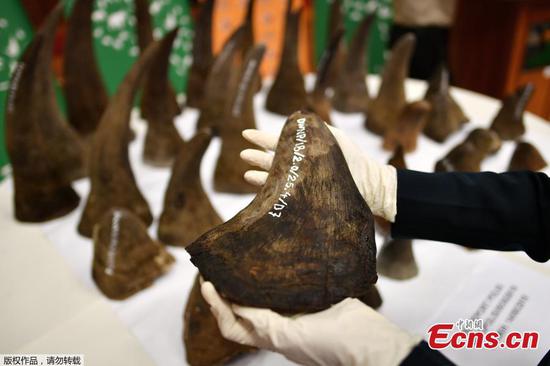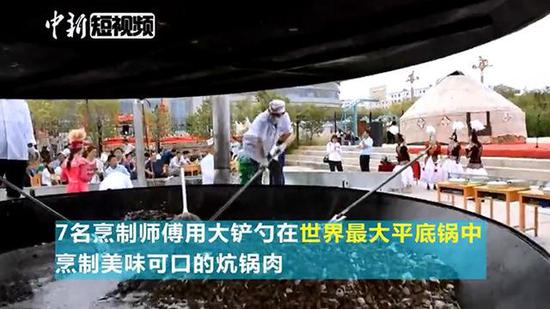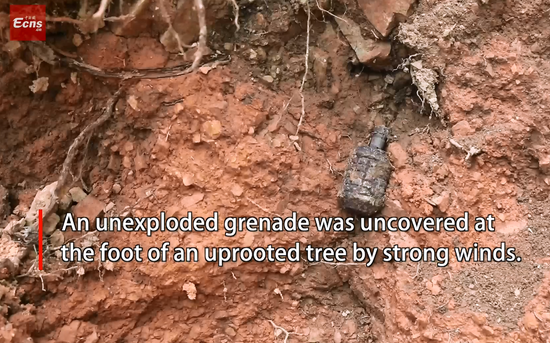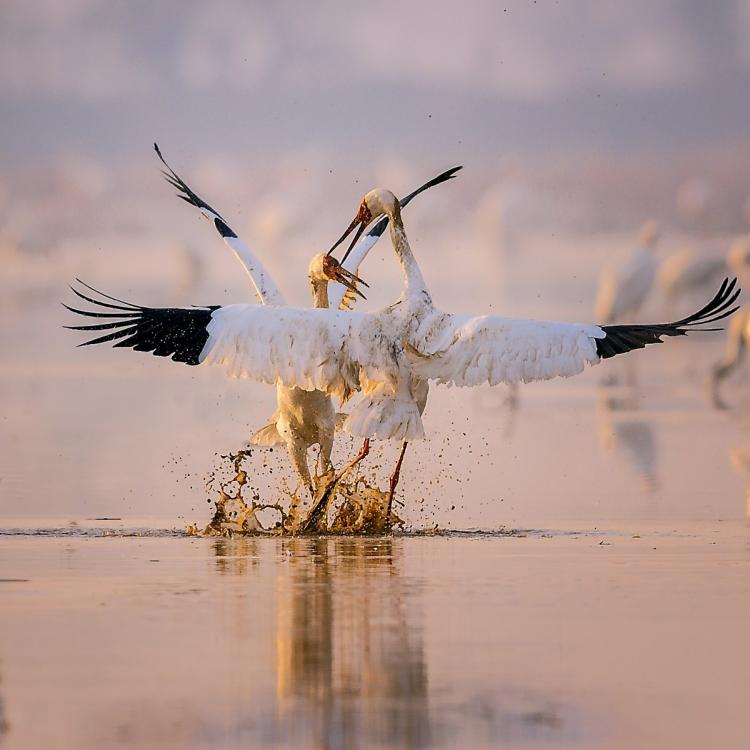
Two Siberian white cranes are among the several thousand that migrated in December on their annual journey to the Poyang Lake area in Nanchang, Jiangxi Province. (Photo by Zhou Haiyan/for China Daily)
It's almost harvest season for lotus roots in Jiangxi province, but Zhou Haiyan, 46, has no plans to reap what she sowed: The roots are not for sale.
Zhou rented nearly 200,000 square meters of lotus field, waiting for the migration of Siberian white cranes, a species listed by the International Union for Conservation of Nature as critically endangered-one step away from extinction.
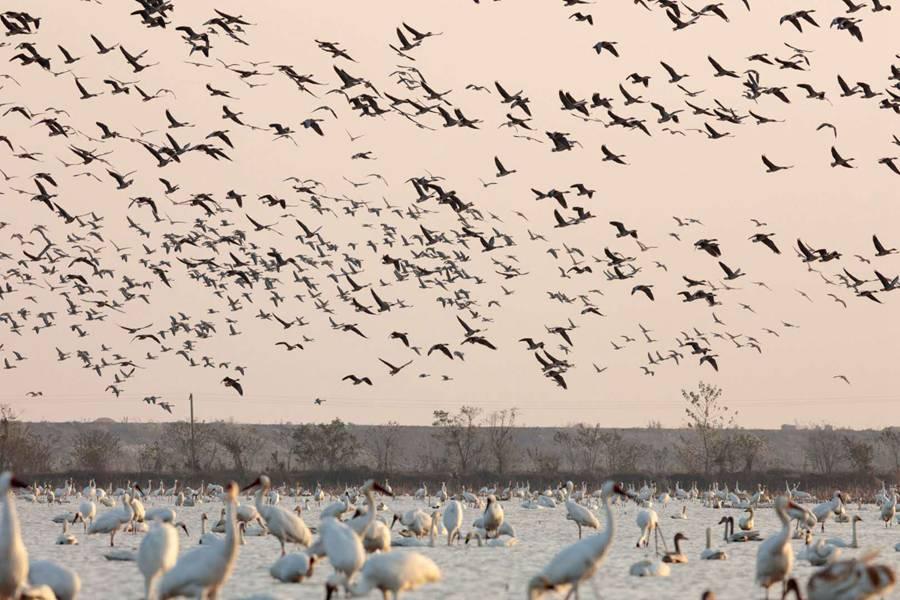
Several thousand white cranes are seen in the Poyang Lake area in Nanchang, Jiangxi Province. [(Photo by Zhou Haiyan/for China Daily)
The species breeds in the Yakutia region of northeastern Siberia in Russia, and around 3,600 white cranes, around 98 percent of the total population, spend the winter in the Yangtze River Valley, especially in the wetlands around Poyang Lake, the biggest freshwater body in China.
At their breeding grounds, white cranes eat cranberries, rodents, fish and insects. At their wintering migration site, they dig roots and tubers from the wetlands.

Two Siberian white cranes are among the several thousand that migrated in December on their annual journey to the Poyang Lake area in Nanchang, Jiangxi Province. (Photo by Zhou Haiyan/for China Daily)
"I am worried that the roots here are not enough for the cranes," Zhou said. "We don't have enough money to rent more wetland to plant lotus."
Zhou used to be a reporter at Jiangxi Television and an amateur bird photographer. Since last year, however, she has devoted herself to protecting the wetlands on Wuxing Farm, which is in a northeast suburb of Nanchang, the capital of Jiangxi province, on the river-laced south shore of Poyang.
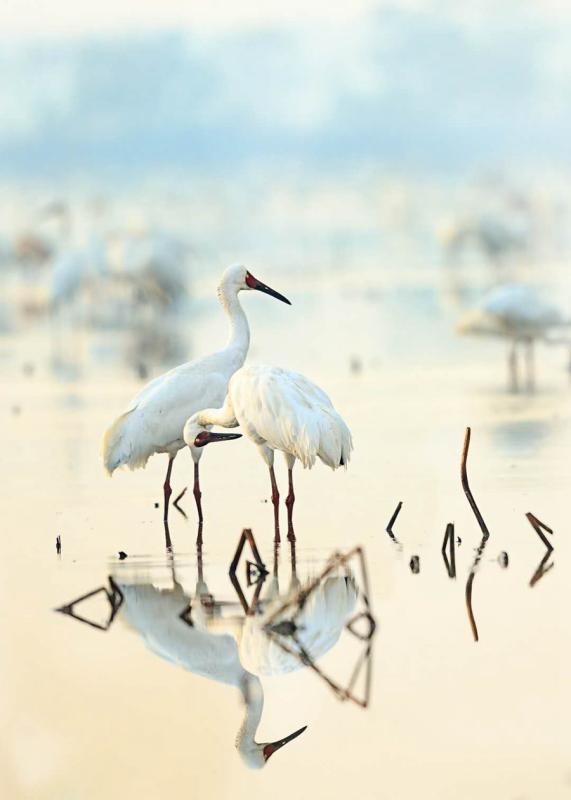
Two Siberian white cranes are among the several thousand that migrated in December on their annual journey to the Poyang Lake area in Nanchang, Jiangxi Province. (Photo by Zhou Haiyan/for China Daily)
In 2016, she learned from local farmers that they had decided to plant rice instead of lotus in the 1.3-million-sq-m field of Wuxing Farm because an increasing number of migrating birds have been eating their lotus since 2012.
"If they plant rice, the white cranes will have no food when they come in November," she said. "I had to act and keep the lotus field for the birds."
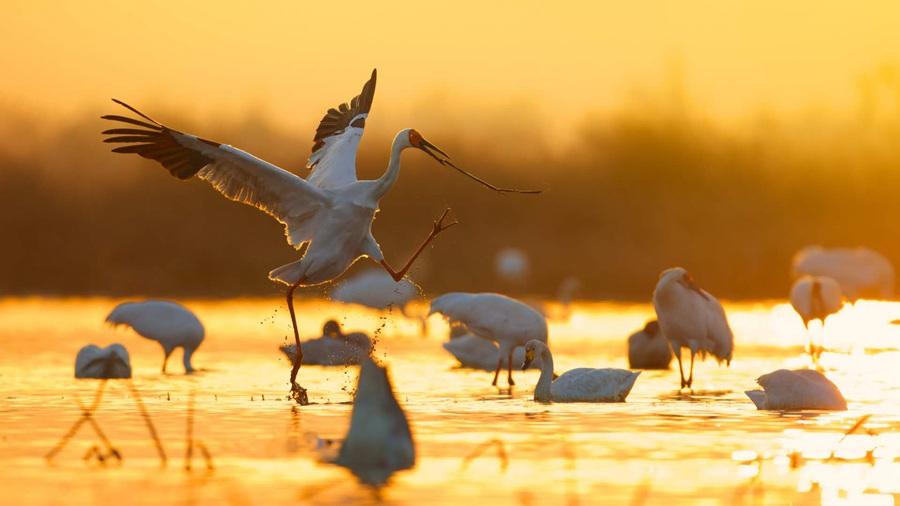
White cranes are seen in the Poyang Lake area in Nanchang, Jiangxi Province. (Photo by Zhou Haiyan/for China Daily)
Together with other bird photographers, Zhou founded a nongovernmental organization and managed to raise around 2 million yuan ($292,000) last year from wildlife lovers and a company to rent the field from the farm, plant lotus for the migrating birds and build a small exhibition hall to educate people about white cranes.
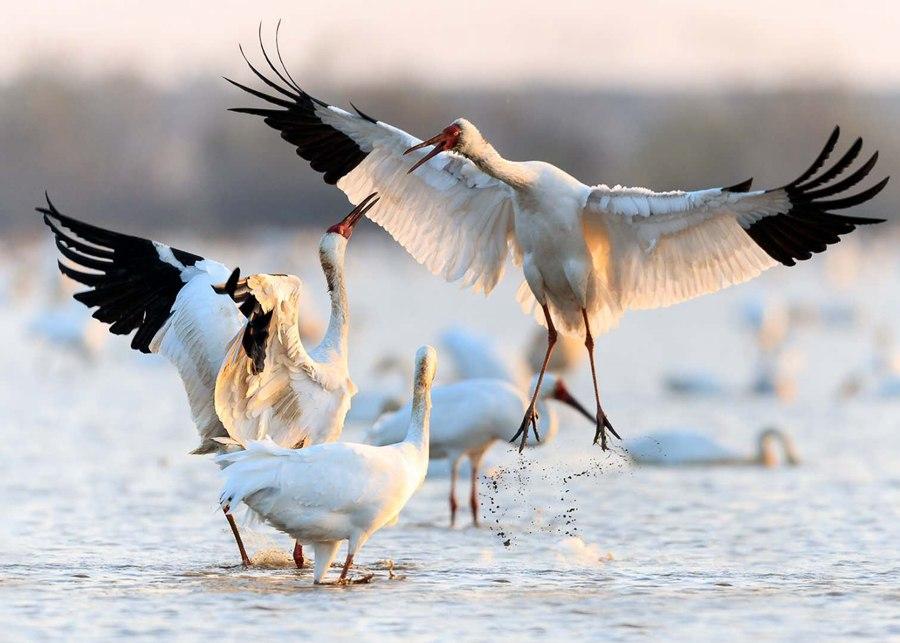
White cranes are seen in the Poyang Lake area in Nanchang, Jiangxi Province. (Photo by Zhou Haiyan/for China Daily)
Around 1,000 white cranes were spotted in the lotus field of Wuxing Farm between November last year and April, but because all the nearby wetlands of the farm have been converted to rice planting, Zhou's field cannot accommodate all the birds.
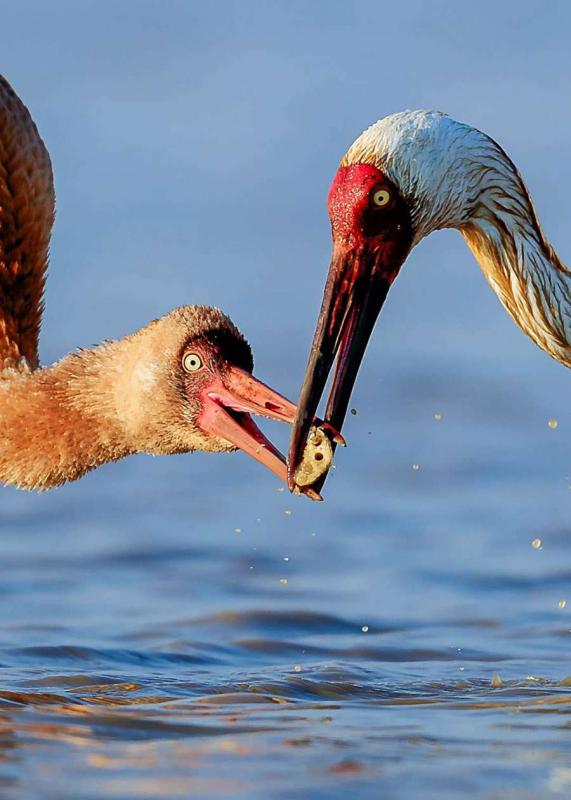
"It made me sad to see white cranes fighting for food with other birds, such as wild geese and ducks," Zhou said. "But we cannot afford to rent more field. (Photo by Zhou Haiyan/for China Daily)
"Last year, we rented a 300,000-square-meter field, and because we didn't raise enough funds this year, we had to give up one-third of the field."
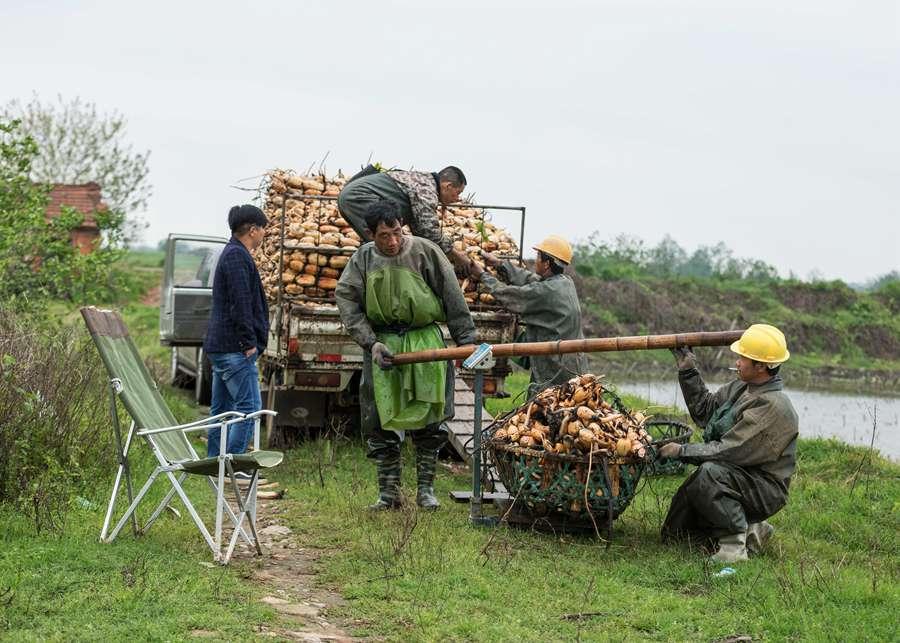
Zhou has donated 800,000 yuan out of her own pocket for the protection drive. (Photo by Zhou Haiyan/for China Daily)
"I didn't have a choice when I learned of those cranes' situation, and we are applying for funds from government and other wildlife protection funds this year," she said. "Things will hopefully get better next year."
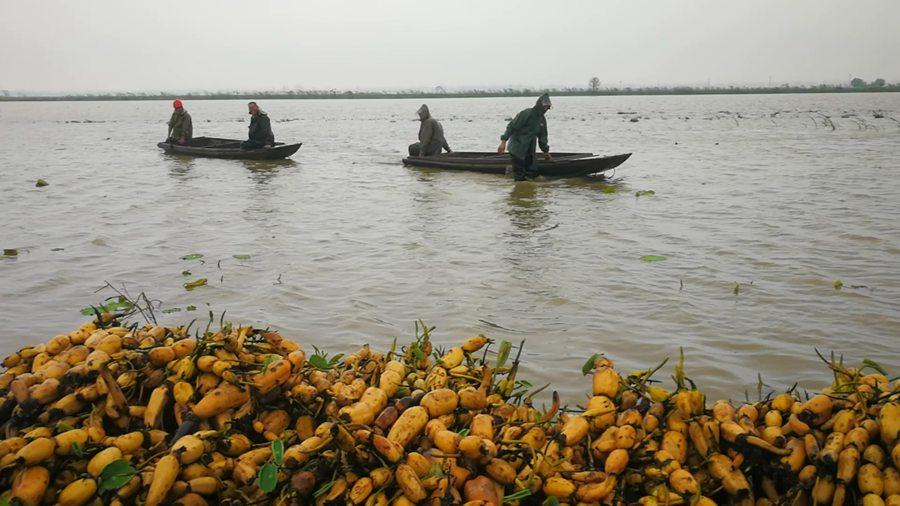
Guo Yumin, a professor specializing in cranes at the Wild Animal Research Institution of Beijing Forestry University, said, "The white crane is one of the world's most endangered species, and Poyang Lake is the only resting ground in China for white crane migration." (Photo by Zhou Haiyan/for China Daily)
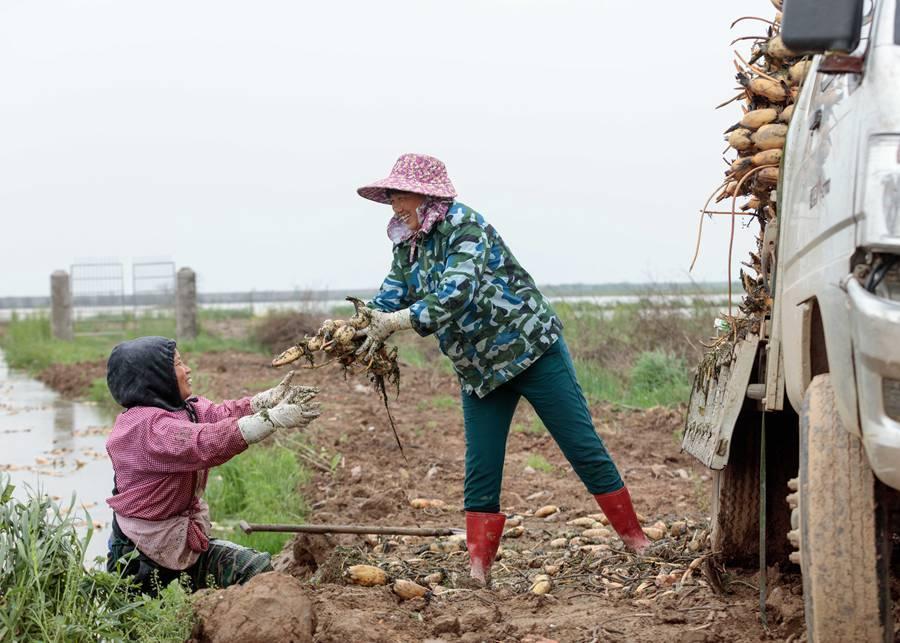
Guo said he will lead a group of Russian bird experts from the white cranes' breeding place-the federal reserves of the Yakutia region-to do field research at Poyang Lake this winter. (Photo by Zhou Haiyan/for China Daily)
![White cranes are seen in the Poyang Lake area in Nanchang, Jiangxi Province. [Photo by Zhou Haiyan/for China Daily]
\](http://www.bazhesc.com/hd/2018/08/13/e17fdd2633244f99ad37d7ffd1bc49ba.jpg)
White cranes are seen in the Poyang Lake area in Nanchang, Jiangxi Province. [Photo by Zhou Haiyan/for China Daily] "I couldn't believe my eyes when seeing so many of them resting in such a small area of wetland," Guo said, recalling his encounter with the white cranes in December.
"We will be right here waiting for them every year," he said. (Photo by Zhou Haiyan/for China Daily)
![White cranes are seen in the Poyang Lake area in Nanchang, Jiangxi Province. [Photo by Zhou Haiyan/for China Daily]](http://www.bazhesc.com/hd/2018/08/13/bc261c5cc68e466ebb59bfdc4a3fe9e8.jpg)
White cranes are seen in the Poyang Lake area in Nanchang, Jiangxi Province. [Photo by Zhou Haiyan/for China Daily]








